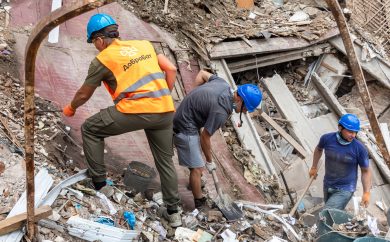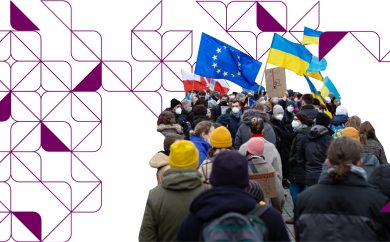Civil society and its role in advocacy and monitoring continues to address a critical need in Ukraine’s ongoing reform process. Current sources of support for civil society include bilateral donors, international organizations, foundations, local CSOs that are dedicated to capacity building of other CSOs, the Government of Ukraine (GoU), the Ukrainian private sector, and individuals. Support for CSOs spiked immediately following the Revolution of Dignity and has levelled or declined since. ISAR-Ednannia, a Ukrainian CSO building the capacity of other CSOs through a School for Community Foundations, reports that the share of support for the School from international sources rose from 24 to 52 percent in the period 2011-15 and has since leveled off at around 40 percent. Steps are being taken by Ukrainian CSOs to reduce their reliance on donor support and build self-sustainability via self-generating income. This is centered around efforts to re-position themselves in terms of their business models, offering their services and products for fees.
The legacy advocacy mechanism should operate independently of government in order to avoid state capture or any undue influence or politicization of the mechanism. Other stakeholders should play a role in supporting the mechanism and governance of the mechanism should be designed to reflect the range of supporters.
Pact’s UNITER feasibility study (2015) sought “competency and passion” in trying to identify one or more entities in Ukraine that could carry the mandate of serving as a legacy advocacy mechanism. Consideration of the most promising actors found none that was both interested and suitable to be considered a serious candidate for the purpose. The study further found that design of such a mechanism was not appropriate at the time, given the existing status of civil society development, as well as the political context, in Ukraine. As was the case at the time the study was prepared, relevant processes continue to be fragile and in need of time to further evolve, and further international presence is required to support this evolution.
The study presented four options for developing some form of a legacy mechanism:
- Working with one or several local organizations to stoke their passion and develop their competency as convener, advisor, and donor to local CSOs and civic coalitions;
- Establishing a new organization or organizations (traditional CSO, e.g. spinoff) to fill this role;
- Leaving behind a legacy of independent CSOs to attract donor funding without the need of an intermediary Ukrainian donor organization;
- A new and innovative model of sustainability.
The first option is not being pursued because the lack of “competency and passion” referred to above still characterize the Ukrainian CSO community. Despite the presence of these values, to varying degrees, and clear commitment and, in many cases, notable effectiveness and visible achievement of Ukrainian CSOs in a highly challenging environment, none are in a position to take on the leadership, mentoring, and guiding role that is required to serve as “convener, advisor, and donor” to other local CSOs and civic coalitions.
The second option, to establish a new organization or organizations to fill the role would not be effective because such an organization would necessarily rely on external sources of support for its work and continued existence. As the objective here is to establish a sustainable legacy mechanism, this task requires a structure that either “owns” a long-term pool of funds to support its work on a sustainable basis (ideally in perpetuity), or a mechanism that will generate resources on an ongoing, regular, and reliable basis. Traditional organizations typically do not possess these features.
The third option is not workable because CSOs needing to attract donor funding carry two risks: first, there is no guarantee that the CSO(s) will be successful, going forward, in attracting donor funding if mechanisms are not in place to ensure their proper governance, operation, and impact, which would be difficult to establish in a way that is lasting and secured; and second, while donor funding may play a role in the mechanism, for example, at launch, continued reliance on donor funding is not an attractive option because donor priorities and strategies change over time, tend to be time-bound, and are often short- term in horizon. These are not features that are appropriate for a mechanism that will work in Ukraine on an independent, and sustained, basis.
This leaves the fourth option — design and establishment of “an innovative model of sustainability” — as the one to pursue.


